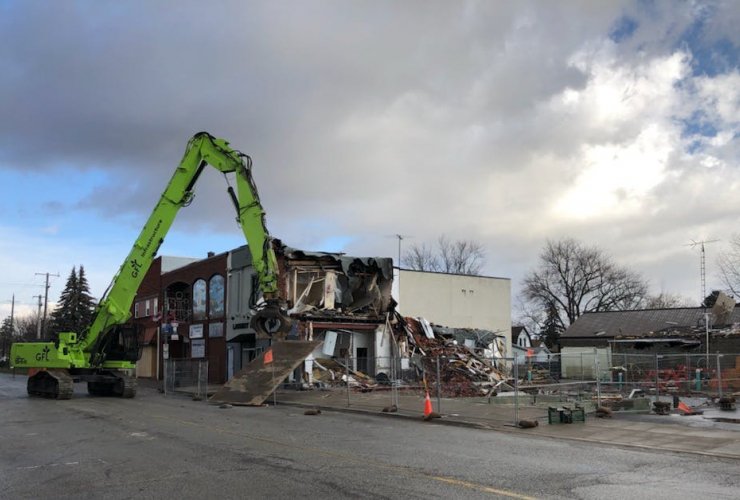Once again, our hospitals are straining under the weight of a growing load of COVID-19 cases, a burden amplified by the sheer number of health workers who are being felled by the virus themselves.
In Ontario, the number of hospitalizations has risen above 1,000 for the first time since February, while wastewater data suggests as many as 120,000 new cases a day. It’s serious enough that Dr. Kieran Moore, the province’s chief medical officer of health, came out of hiding for the first time in nearly a month Monday to “strongly encourage” people to wear their masks again in public indoor settings.
When the full story of this pandemic is finally written, the behavior of people like Moore — to say nothing of his political masters at Queen’s Park — will feature prominently.
We know, and he knew, that removing the province’s masking mandate in March was premature and would almost certainly invite another surge in cases and hospitalizations. But the political calculus of an impending provincial election was allowed to override the math of exponential growth and its inescapable realities.
Those public health officials could be excused for not fully understanding this during the first wave back in 2020, and it’s easy to see why the premiers they work with seemed to wait until the last possible moment to do what was necessary during the subsequent ones.
But now, with two years of the pandemic at our backs and the enormous body of research and data that it has generated, there are no excuses left. The reaction to previous waves was driven by a stew of uncertainty, indecisiveness and opportunism. But this current one has a single defining ingredient: cowardice.
Just last month, when Moore tried to cover for the Ontario government’s decision to remove the province’s mask mandate, he said that it was up to individuals to figure out when to wear them in public. “You can’t mandate masking forever. It has to be, eventually, an individual choice based on an individual’s risk assessment, and we’re at that point, by March. twenty-one.”
What people are reading

This was, at best, a cop-out. In reality, it was an abdication of his responsibilities from him — ones that he left behind during his recent vacation in the Caribbean.
After all, as we’ve shown time and time again as a species, we’re just not very good at assessing risk. This is a well and widely documented reality. As Marie Helweg-Larsen, a professor of psychology at Dickinson College, told the New York Times‘ AC Shilton back in 2020, “People think that their own risk is less than that of other people’s risk.” This is known as the “optimistic bias,” and it explains any number of otherwise high-risk behaviors, from riding motorcycles to walking around unmasked in the midst of a pandemic.
Humans are also notoriously bad at properly identifying and weighing the various risks we face. Our fears tend to revolve around low-probability outcomes like plane crashes and natural disasters, even though a poor diet, a lack of exercise and even getting into our cars are far bigger threats.
Opinion: When the full story of this pandemic is finally written, the behavior of people like Dr. Kieran Moore — to say nothing of his political masters at Queen’s Park — will feature prominently, writes columnist @maxfawcett. #COVID19
And when it comes to accounting for longer-term risks and incorporating them into our near-term behaviour, we tend to live with blinders on. Witness the persistent unwillingness to take climate change as seriously as it demands, despite the obvious consequences for our long-term health and well-being.
So when politicians and public health experts tell people to “perform their own risk assessment,” they’re essentially inviting large parts of the public to make bad decisions. As Dr. Katharine Smart, the president of the Canadian Medical Association, tweeted in March, “’Perform your own risk assessment’ might be the new ‘I did my own research.’”
And as this pandemic has proven time and time again, doing your own research is the best way to get it completely wrong.
The usual suspects are already hand-waving this latest surge of cases away. as the Toronto Sun’s Brian Lilley wrote, “We don’t need to panic and bring in more restrictions, we need to be patient and wait a week to two for this latest wave to crash.” That it’s crashing down on an already battered health-care system doesn’t seem to occur to him. But given Postmedia’s fondness for more private health care, maybe that’s the whole point.
The rest of us need to remember a pandemic doesn’t end just because we want it to, and that doing your own risk assessment involves listening to experts who actually understand what the risks are here.
Wearing a mask isn’t going to single-handedly end the pandemic, but neither will pretending you don’t need them anymore.
The Ford government clearly performed a political assessment and decided it would be better to gamble with people’s health than protect their health-care system. When it comes time to vote, Ontarians should remember just how much this approach to COVID has already cost them — and how much more it still could.